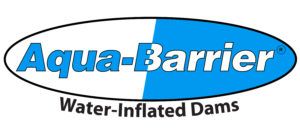The top two most devastating natural disasters in recorded history were floods, according to LiveScience.com. The Central China Floods of 1931 and the Yellow River Flood in 1887.
Natural Disasters are the cause of massive damage to land and property all across the world. Most of these disasters strike without warning while others take days or hours to formulate. And according to research, floods are the most devastating of them all.
What are some ways to protect your home from flooding? Bankrate.com has the following suggestions:
- Safeguard in-home electrical systems – Raise switches, sockets, circuit breakers and wiring at least a foot above the expected flood level in your area.
- Anchor and raise outdoor equipment – Fuel tanks, air-conditioning units and generators should be anchored and raised above your flood level.
- Modify water valves – A flooded sewer system can cause sewage to back up into your home. So install an interior or exterior backflow valve.
- Determine how water flows around your house – This is easy enough to determine by watching how water flows or accumulates during an average rainstorm. Obviously, it’s best if the home was built so that water drains away from the building.
- Last minute measures – Clear gutters, drains and downspouts; move furniture, rugs, electronics and other belongings to upper floors, or at least raise them off a ground floor; shut off electricity at the breaker panel; and elevate major appliances onto concrete blocks if they’re potentially in harm’s way from flooding.
Hydrological Solutions has a better solution. To help protect your home or commercial property from flooding, we suggest using our Water Inflated Property Protector (WIPP).
WIPP is the ultimate flood barrier that can be used for both residential and commercial areas. Using WIPP to guard your home or business, by placing it around the premises, will help to prevent invasive water from damaging your property.
You may have tried using sand bags to prevent invasive water from entering your property. The main problem with using sand bags is they aren’t user ready, and after the flood, they require Hazmat procedures for disposal, which adds another layer of unnecessary cost. Sand bags are also not environmentally safe like the WIPP system.
WIPP units are constructed from industrial grade vinyl coated polyester. This fabric is laminated with a base of woven polyester between two layers of flexible polyvinyl chloride. These units can be repaired easily in the field in wet or dry conditions, are resusuale and provide for compact storage, transportation, and ease of handling. To give our customers options, we are able to customize the size tailored to specific needs.
For more information on protecting your property from flooding, contact Hydrological Solutions today.


